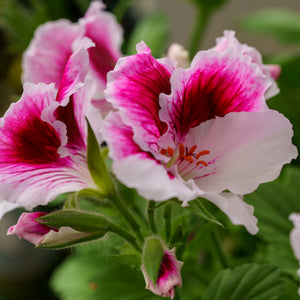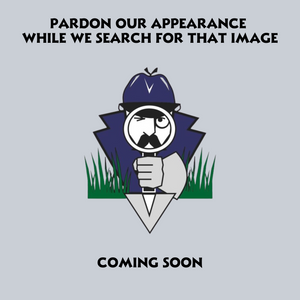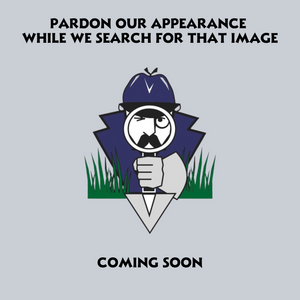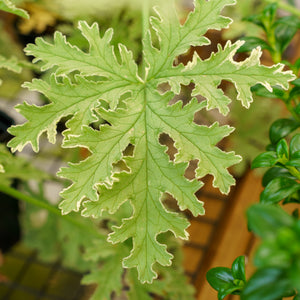The Pelargonium Guide
Pelargoniums, often referred to as geraniums, bring a touch of vibrant color and delightful fragrance to any garden landscape. Known for their diverse forms and colorful blooms, Pelargonium plants are perfect for adding texture, color, and charm to borders, garden beds, and containers. These plants are admired for their ability to thrive in various conditions and their relatively easy care. Whether you're aiming to enhance your garden's visual appeal, create a lively display, or add a unique element to your space, Pelargonium offers a captivating and versatile solution. Explore our Pelargonium Guide to learn more about cultivating and caring for these delightful plants, and discover how to incorporate them into your garden for lasting beauty and enjoyment.
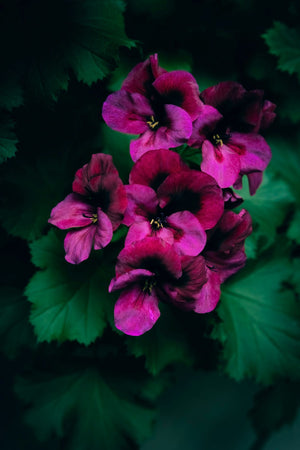
About Pelargonium
Pelargonium is a genus of flowering plants in the Geraniaceae family, comprising about 280 species. These plants are native to southern Africa and are commonly known as geraniums, although true geraniums belong to a different genus (Geranium). The name "Pelargonium" is derived from the Greek word "pelargos," meaning stork, referring to the stork-bill shape of the seed pods.
Pelargonium plants are known for their diverse and colorful blooms, which come in shades of red, pink, purple, white, and orange. The flowers can be single, double, or semi-double and are often borne in clusters. The foliage is typically green and can be either smooth or slightly serrated, adding to the plant's overall appeal. Some varieties also have fragrant leaves, emitting scents of rose, lemon, mint, or other delightful fragrances.
Some popular species and varieties of Pelargonium include Pelargonium zonale (Zonal Geranium), known for its vibrant flowers and rounded leaves, Pelargonium peltatum (Ivy-Leaved Geranium), with its trailing habit and glossy leaves, and Pelargonium graveolens (Scented Geranium), prized for its fragrant foliage. Each species and variety has its unique characteristics, but all share the common traits of colorful flowers and easy care.
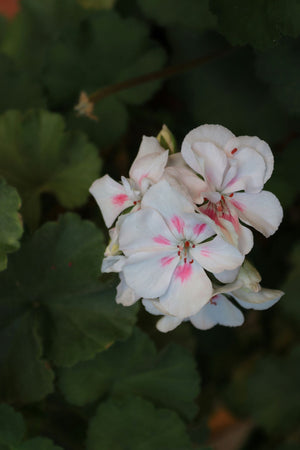
Planting Pelargonium
Pelargonium plants require specific planting conditions to ensure their successful establishment and flourishing growth. Here are some essential guidelines for planting and caring for Pelargonium:
Soil: Pelargonium prefers well-draining soil that is moderately fertile. A loamy or sandy soil works best. Ensure the planting site is free from heavy clay or waterlogged conditions, which can cause root rot. Adding compost or well-rotted manure can improve soil fertility and drainage.
Light: Pelargonium thrives in full sun to partial shade. Choose a location with at least six hours of direct sunlight per day for optimal blooming. In hotter climates, some afternoon shade can help protect the plants from intense heat.
Watering: Pelargonium is relatively drought-tolerant once established but requires regular watering during the initial growth period. Water the plants deeply, allowing the top inch of soil to dry out between waterings. During hot, dry periods, increase the frequency of watering to maintain soil moisture.
Planting Depth: Plant Pelargonium at the same depth as it was growing in its pot or nursery container. Space the plants 12-18 inches apart to allow for proper air circulation and growth. When planting in the ground, dig a hole twice as wide and the same depth as the root ball to encourage root spread.
Mulching: Apply a layer of organic mulch, such as compost or shredded leaves, around the base of the plants to retain moisture, suppress weeds, and regulate soil temperature. Avoid covering the crowns directly, as this can lead to rot.
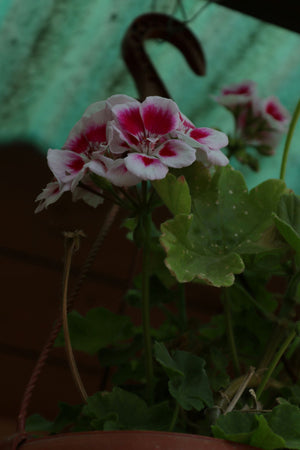
Care for Pelargonium
Pelargonium plants require specific care to ensure their optimal growth and health. Here are some general guidelines for the care of Pelargonium:
Watering: Keep the soil consistently moist during the growing season but avoid waterlogging. Water the plants deeply, allowing the top inch of soil to dry out between waterings. During hot, dry periods, increase the frequency of watering to maintain soil moisture. Once established, Pelargonium is quite drought-tolerant.
Fertilizing: Pelargonium benefits from a balanced, slow-release fertilizer applied in the spring as the plants begin to grow. Follow the recommended dosage on the product label. Over-fertilizing can lead to excessive foliage growth at the expense of flowers.
Pruning: Prune Pelargonium plants regularly to maintain their shape and encourage bushier growth. Remove spent flowers to promote continuous blooming and trim back any damaged or dead foliage as needed. Pruning is best done in late spring or early summer.
Pests and Diseases: Pelargonium is relatively pest-resistant but can be susceptible to issues such as aphids, whiteflies, and spider mites. Inspect your plants regularly and treat any infestations promptly with appropriate organic or chemical controls. Maintain proper spacing and air circulation to reduce the risk of diseases.
Winter Care: In colder climates, Pelargonium plants can be treated as annuals or grown in containers that can be brought indoors during the winter months. Place the containers in a bright, sunny spot and reduce watering to keep the soil on the drier side. If grown as a perennial in mild climates, prune back the plants in late winter to encourage new growth in the spring.
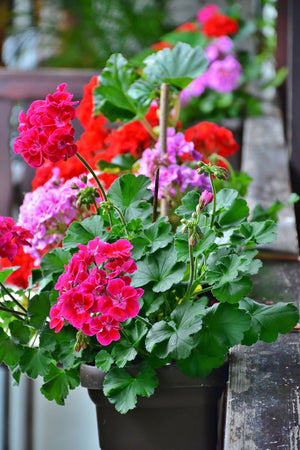
How to Use Pelargonium
Pelargonium offers versatility and can be utilized in various ways to enhance your garden and outdoor spaces. Here are some recommendations based on their characteristics:
Borders and Beds: Pelargonium’s vibrant flowers and lush foliage make them perfect for adding texture and color to garden borders and flower beds. Plant them in clusters or drifts for a dramatic display of color and form.
Containers: Pelargonium can be grown in containers, making them a versatile choice for patios, balconies, or small gardens. Choose a large container with good drainage and place it in a sunny spot to enjoy the plants up close.
Hanging Baskets: Trailing varieties of Pelargonium, such as Ivy-Leaved Geraniums, are ideal for hanging baskets. Their cascading habit and colorful flowers create a stunning visual effect when suspended.
Mixed Plantings: Combine Pelargonium with other sun-loving annuals and perennials, such as marigolds, petunias, and salvias, to create a lush, colorful garden. Their bright flowers and lush foliage will complement other plants beautifully.
Scented Gardens: Scented varieties of Pelargonium, such as Pelargonium graveolens, can be grown in scented gardens or near walkways to enjoy their delightful fragrances. Use them in herb gardens or as companion plants for aromatic herbs.
Conclusion
Pelargonium is a captivating and versatile addition to any garden or outdoor space. With their vibrant flowers, lush foliage, and relatively easy care, Pelargonium plants bring a touch of cheerful brightness and resilience to your environment. Their adaptability to various growing conditions and ease of care make them a favorite among gardeners of all levels. By following proper planting and maintenance techniques, you can fully harness the potential of Pelargonium to enhance your garden, creating a lasting impact.
Whether you seek to create stunning flower displays, add visual interest to borders and beds, or enjoy their beauty in containers, Pelargonium can fulfill a variety of roles in your landscape design. Place them individually to highlight their unique blooms and foliage, or combine different species and varieties for a dynamic and visually appealing display. Pelargonium’s resilience and adaptability also make them ideal for hanging baskets and scented gardens.
Beyond their ornamental value, Pelargonium plants contribute to the overall beauty and charm of your garden ecosystem. With their enduring beauty, versatility, and ecological significance, Pelargonium plants bring delight and natural allure to your outdoor environment, enriching your gardening experience and enhancing the overall beauty of your landscape.

